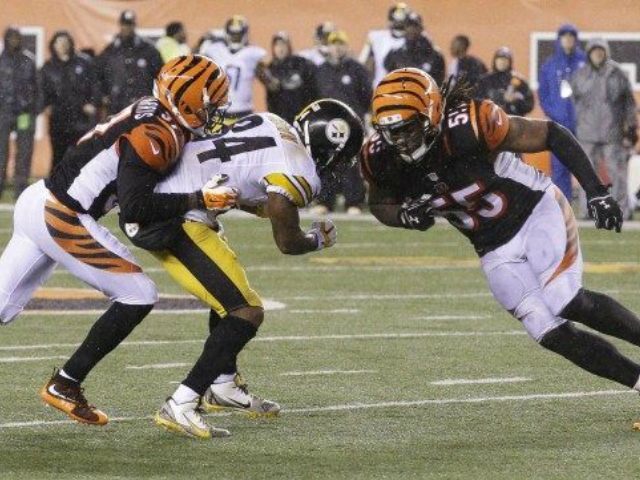NFL concussions rose in 2015 after several years of decline.
The NFL reports 190 regular-season concussions for 2015. That means that roughly one in ten players suffered a mild traumatic brain injury during regular season games and practices in 2015.
Figures from the league indicate 176 concussions in 2012. The number dropped to 152 in 2013 and fell further to 123 in 2014.
The documented cases do not include preseason and postseason injuries. Unreported concussions also remain uncounted. According to the American Medical Society for Sports Medicine, as many as half of all sports concussions go unreported. Chris Nowinski of the Sports Legacy Institute claims 55 out of every 56 sports concussions go undocumented.
Nearly half of all regular-season concussions in 2015 came via a collision with another helmet. Playing surfaces ranked as the second leading cause of the injury at 29 total. Contact with shoulders came in third with 23.
The injury, which sees no diagnosis save a clinical one and no “cure” save rest, vexes football now as it did since the sport’s origins. Doctors assigned to Harvard University’s team in 1905 diagnosed 19 concussions over the course of the season. They noted that players, who did not as a rule wear helmets, regarded the injury as a “joke.” But head coach Bill Reid took them seriously enough to forbid his team’s concussed captain from competing in the rivalry game against Yale and instructed his players that if “any man in any game got hurt by a hit on the head so that he did not realize what he was doing, his team mate should at once insist that time be called and that a doctor come onto the field” and every player “must make up his mind in case he gets hurt, to have a friend with him from the time the injury occurred until noon of the next day.”
More than 110 years later, similar precautions remain in place. The medical understanding of the injury, with no pill to cure concussion symptoms and no way to diagnose them save for a doctor’s opinion, remains largely mired in the same spot, too.
With increased awareness came increased precautions. Moving the goal post out of the field of play, prohibitions on spearing, and requirements to wear helmets all reduced the problem. Some football teams, including the Seattle Seahawks, look to rugby for guidance on safer tackling that emphasizes shoulders and removes the head from the collison. “Football players, because of the historic way they’ve been taught—they’re starting to change now— they’ve always used their heads as part of the tackle,” Bill Good, a youth rugby official in Massachusetts who has helped football teams with tackling, told Breitbart Sports last month at a pre-screening of Concussion hosted by MomsTeam. “That leads to injuries. Lately you see more and more football teams bringing rugby coaches in to help them with that tackling.”
The NFL has taken steps in recent years to reduce concussions. Rule changes include flagging running backs for ramming into defenders with lowered heads and pushing up kickoffs to the 35 yard-line to reduce the chances of a return on one of the more dangerous plays in football. Helmet-to-helmet hits, which result in more concussions than any other type of collision, generally draw automatic flags.

COMMENTS
Please let us know if you're having issues with commenting.